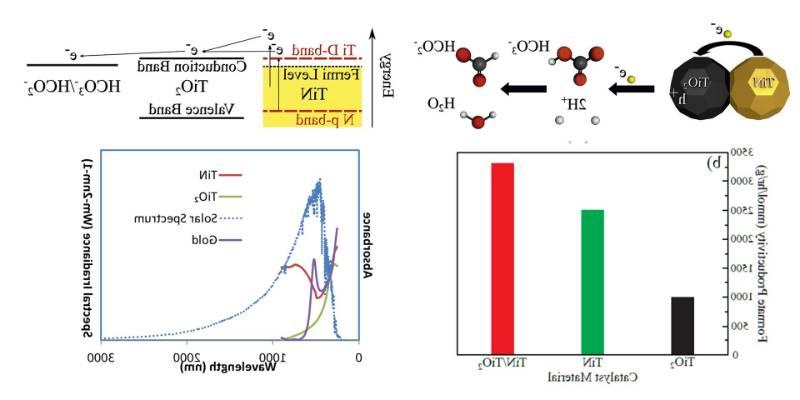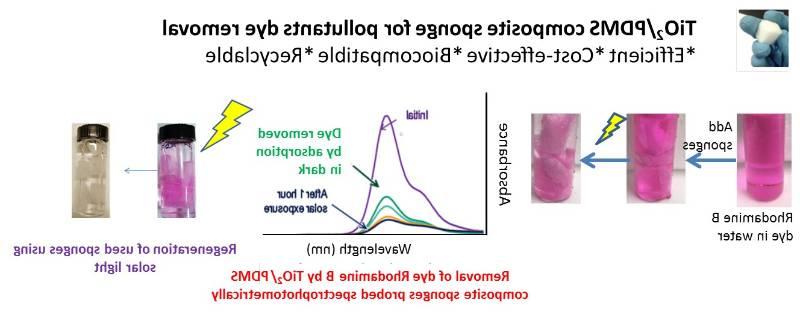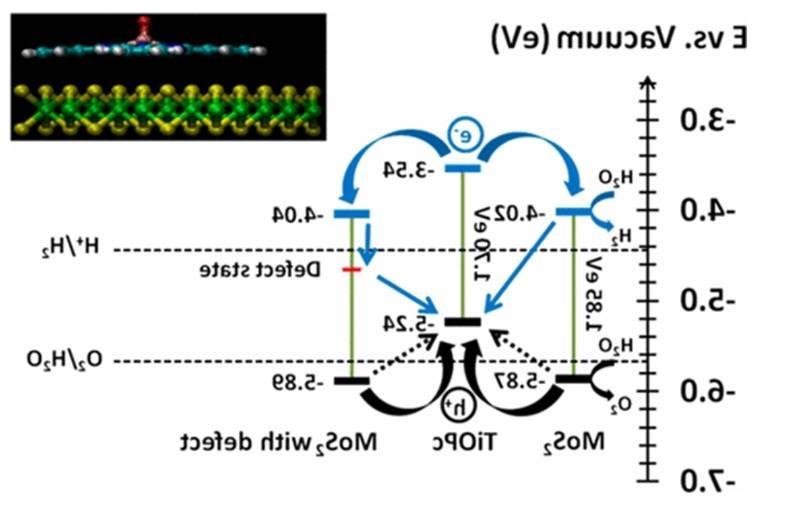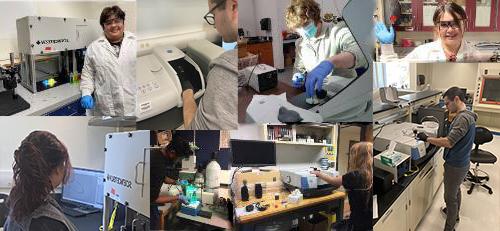
光子学和等离子体纳米研究实验室
Welcome!
The research interests of our group evolve around the development of optically active nanostructures such as plasmonic nanoparticles for different applications, ranging 从检测生物分子到太阳能转换. 电浆纳米颗粒 can strongly enhance local electromagnetic field; and their ability to concentrate 光在纳米尺度上有广泛的应用. 目前,我们的研究 group focus on two specific areas: (1) Development of efficient photothermal materials which can convert light into heat for different applications such as solar mediated catalysis, solar enhanced water evaporation and photothermal recycling of polymer. (1) Development of plasmonic materials to efficiently concentrate light in the nanoscale 来驱动能量昂贵的反应. 我们小组使用实验和理论两种方法 tools to gain a fundamental understanding of the optical and electronic properties 不同的等离子体纳米粒子. 我们特别注重发展 alternative plasmonic nanomaterials which can replace conventional plasmonic materials 比如黄金和白银. 我们正在研究难熔等离子体纳米材料,如 titanium nitride nanomaterials for efficient conversion of light into other forms 由热能、化学能和电能组成的. 此外,我们学习 双金属等离子体纳米粒子. 控制和调整光学特性的可能性 of bimetallic plasmonic materials assumes a paramount relevance in the development of different applications such as plasmon enhanced catalysis as well as polymer recycling 以及增材制造.
研究突出了
Refractory Plasmonic Transition Metal Nitride Nanoparticles as Support for Transition Metal Catalysts

We revealed a strong electronic interactions between transition metal phthalocyanine (TMPc’s) on a refractory transition metal nitride support, specifically copper phthalocyanine 氮化钛(TiN)上的CuPc. x射线光电子能谱(XPS),光电子 emission microscopy (PEEM) and density functional theory (DFT) calculations are presented 为了支持我们的观察. 有趣的是,存在一些纳米级的天然氧化物 layer on the surface of the TiN nanoparticles, which consists of TiN, TiO2, and Titanium oxynitrides (TixOyNz) does not influence the nature of charge transfer among TiN and CuPc. Substantial deviations are however found between photoelectron emission microscopy (PEEM)测量TiN(4)的功函数.68 eV)和理论计算功 原始化学计量TiN(2)函数.63ev),因为存在氧化物 层在TiN表面. 我们的学习提供了一个应用新课程的机会 of materials based on transition metal phthalocyanine/transition metal nitride composites 催化与光电器件. (应用表面科学614 (2023)156204)

We have successfully deposited transition metal catalyst Nickel and Platinum on refractory plasmonic titanium nitride (TiN) nanoparticles using visible light induced plasmon 增强沉积法. 过渡金属催化剂的催化性能 on TiN supports were demonstrated using the visible light-mediated bicarbonate to 在甘油作为孔洞清除剂存在下进行甲酸还原反应. The findings of this study can be used to synthesize stable and efficient visible light-responsive plasmonic composite catalysts using mild reaction conditions, which can accelerate 不同能量的广泛反应利用光. (材料研究通报 (2022) 111834)
难熔等离子体纳米材料辅助热固性材料的回收利用

Thermosetting polymers such as epoxies are an important class of polymers which are
extensively used for many applications such as structural materials, electronics packaging,
and adhesives. 这些热固性聚合物以其稳定的热机械性能而闻名
性能及优异的耐化学性. 然而,这些热固性聚合物
materials are intrinsically not recyclable because of their irreversible cross-linked
网络结构. 我们的研究小组正致力于开发可回收的热固性材料
polymers which can be recycled through depolymerization using solar light easily and
能源效率. 为了实现这一目标,我们正在开发热可逆环氧树脂/
难熔等离子体氮化钛复合材料. 分散良好的等离子体纳米材料
in the epoxy matrix can act as a localized thermal source that convert light into
局部热有效迅速地触发解聚. (最近接受了
手稿,2022,ACS应用高分子材料)
等离子体复合材料的弛豫动力学研究

We studied optical properties of bimetallic nanoparticles comprised of plasmonic nanoparticle 如黄金和催化剂如镍和铂. 我们应用了超快时间分辨 spectroscopy to examine the rate of different plasmon dephasing pathways, such as electron-electron scattering, electron-phonon coupling, and phonon-phonon scattering. 我们发现了双金属等离子体的光吸收和弛豫动力学 催化剂可以通过调整其组成来调整. 开发光热催化剂 combining plasmonic nanoparticles with catalytic metals extends the benefits of plasmonic nanoparticles to any energy-extensive industrial processes accelerated by those catalysts. (Nanoscale, 2020,12, 10284-10291)
等离子体增强催化

The high temperature stability, strong surface plasmon resonance and the ability to absorb broad spectrum of visible to near infrared light of transition metal nitrides such as titanium nitride (TiN) motivated us to study these materials for photocatalytic reactions. 我们证明了一种有效的光催化还原碳酸氢盐在TiN和 TiO2太阳能光照下/TiN复合纳米催化剂的研究. TiN纳米颗粒 combination with titanium dioxide (TiO2) nanostructures significantly enhance the photoreduction of bicarbonate to produce formate when glycerol is used as a hole scavenger. Interestingly, we found that TiN nanoparticles alone can also behave as an excellent 电浆催化剂. 此外,在反应条件下,TiN纳米颗粒保持稳定 (高pH值)长时间暴露在阳光下(8小时). (太阳能材料和太阳能电池, 2019,200, 109967)

The strong electromagnetic field at the surface of plasmonic nanoparticles such as gold and silver are utilized to manipulate the energy and electron absorption of vicinal 光催化剂,如TiO2 或氧化铜. 本文报道了同步法高效生产甲酸的方法 photoreduction of bicarbonate and oxidation of glycerol in the presence of a composite 催化剂由等离子体粒子和光催化剂纳米粒子组成. (Journal of CO2 Utilization, 2017,22, 117-123; ACS可持续化学 & Engineering, 2018, 6, 1872-1880)

PDMS sponges are suitable substrate for selective absorption of oils and organic solvents from water and can be elastically deformed into any shape and can be compressed repeatedly 在空气或液体中不会塌陷,具有极佳的可回收性. We enhanced those sponges by incorporating nanocatalysts making them suitable for photocatalytic and antibacterial activities, thus promoting potential in environmental applications. (水处理工程学报, 2018, 24, 74-82)

二维层状纳米材料如二硫化钼(MoS)2) nanomaterials are optically active with potential applications in photocatalysis. We manipulated the electronic and optical properties of monolayer molybdenum disulfide by nonsubstitutional doping with macrocyclic organic metallic molecules like titanyl 酞菁(TiOPc)或酞菁铜(CuPc). 结果的含义 is discussed in term of their applicability in important reactions like hydrogen evolution 水解离. (J. Phys. Chem. C 2017, 121, 5, 2959–2967)
资金及其他资源

 私营企业
私营企业

